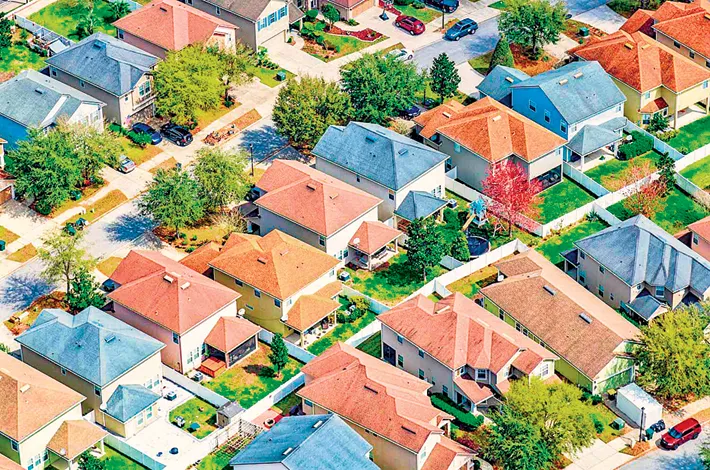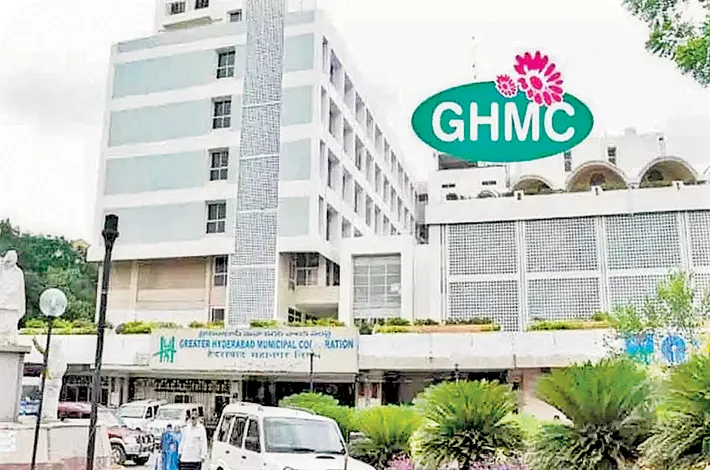Residential market is poised for recovery in 2025: Anarock Study
28-01-2025 12:00:00 AM

The Indian Residential Real Estate Annual Report 2024 provides a comprehensive analysis of the state of the residential real estate market in India, revisiting its performance amid various economic challenges and political changes. The year 2024 was characterized by a mixed bag of results, following a robust 2023.
The report underscores how the Indian real estate market adapted and responded to external shocks, including geopolitical tensions and inflationary pressures that characterized the economic environment in 2024.
Key findings include a decline in new housing launches and sales, alongside a significant increase in average residential prices. The report highlights the overall resilience of the Indian economy, maintaining a growth trajectory despite geopolitical tensions and inflation pressures. The residential market is poised for recovery in 2025, driven by strong demand across various segments, particularly luxury properties, and an anticipated revival in new supply.
■ Decline in New Launches: New residential launches fell by 7% in 2024 compared to 2023 due to election-related delays in approvals.
■ Sales Value Growth: Despite a 2% decrease in housing sales, the sales value increased by 16%, reflecting a rise in average prices.
■ Luxury Segment Surge: The luxury property segment saw a 66% increase in new supply, driven by high demand for premium living spaces.
■ Average Price Increase: Average residential prices across the top seven cities rose by 21% year-on-year, with Delhi-NCR showing a 30% surge.
■ Inventory Decline: Available housing inventory decreased by 8%, indicating strong demand and limited new supply.
■ Emerging Trends: Increasing preference for integrated townships and smart homes, reflecting changing buyer demographics and lifestyle preferences.
■ Tier II Cities Growth: Cities like Ahmedabad and Jaipur are gaining traction, driven by improved infrastructure and affordable housing options.
Key Insights
* Market Stabilization Post-Election: The 2024 slowdown in new launches and sales can be attributed to the general and state elections. Historically, such political events tend to disrupt construction and approvals, leading to a temporary dip in market activity. However, this stabilization may set the stage for a rebound as political conditions normalize.
* Luxury Properties Leading Growth: The surge in luxury properties, particularly in metropolitan areas, indicates a significant shift in buyer preferences. The increasing wealth among India’s middle and upper classes is driving demand for high-end living spaces. This trend reflects the changing socio-economic landscape of India, where more individuals are looking to invest in premium real estate as a status symbol and secure asset.
* End-User Demand Resilience: Despite rising prices and interest rates, end-user demand remains strong, indicating that homebuyers still consider real estate a viable investment. This sustained demand highlights the fundamental strength of the market, as buyers continue to seek residential properties despite external economic pressures.
* Infrastructure Development Impact: The ongoing infrastructure projects, such as metro expansions and new transport corridors, are expected to enhance connectivity and drive demand in peripheral areas. This trend suggests that residential markets in these regions may experience accelerated growth as accessibility improves, making them more attractive to homebuyers.
* Emergence of Co-Living Spaces: The rise of co-living and shared housing models reflects changing demographics and lifestyle preferences, particularly among millennials and young professionals. This trend is expected to gain further momentum as urbanization continues, accommodating the needs of a growing population looking for affordable and flexible living options.
* Sustainability Focus in Developments: The increasing emphasis on sustainable and eco-friendly developments aligns with global trends toward green living. Developers are responding to consumer demand for environmentally responsible properties, which is likely to shape the future of residential projects in the coming years.
* Challenges in Affordability: Despite the positive outlook, affordability remains a significant concern for many potential homebuyers. The rising prices may limit access to housing for lower and middle-income families. Addressing these challenges through government initiatives and affordable housing schemes will be crucial to ensuring sustainable growth in the residential market.
* Market Performance: The Indian residential market saw a decline in new launches, with approximately 4.13 lakh units launched in 2024, down from 4.46 lakh units in 2023. This decline was primarily attributed to the slowdown in approvals and project initiations during the election year.
Notably, housing sales also dipped by 2%, reaching around 4.60 lakh units sold. However, the sales value experienced a significant increase, up 16% year-on-year, indicating a shift toward higher-value transactions despite fewer units sold.
* Price Trends: A pivotal aspect of the report is the 21% increase in average residential prices across the top seven cities, climbing from INR 7,080 per square foot to nearly INR 8,590 per square foot by the end of 2024. This price escalation reflects both heightened demand for luxury properties and the impact of rising input costs on residential developments. The Delhi-NCR region witnessed the most pronounced price surge, with an increase of 30%, highlighting the desire for premium housing options in major urban centers.
* Inventory Dynamics: The report also sheds light on the changing inventory dynamics, with a reduction of 8% in available housing stock, driven by strong demand coupled with a constrained supply. The declining inventory levels across the top cities indicate a more balanced market, aligning supply closely with demand, which is a positive sign of market health.
* Future Outlook: Looking forward to 2025, the Indian residential market is expected to maintain its growth trajectory, bolstered by robust end-user demand and favourable economic conditions. Factors such as improved infrastructure, rising disposable incomes, and a focus on sustainable living are anticipated to drive further growth in the sector.
The report predicts a revival of new supply as developers ramp up project launches that were previously delayed due to the electoral cycle. Additionally, the growing interest in Tier II cities is set to shape the market landscape, as these regions begin to attract more developers and homebuyers alike, thanks to improved infrastructure and government initiatives aimed at urban development.
(ANROCK is a real estate services company)








